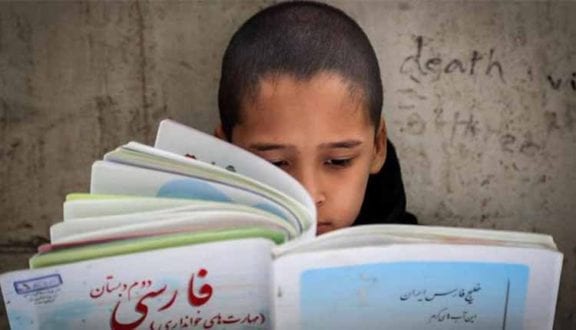iranintl – Iran’s modern public education system, established in the 1930s as one of the first in the Middle East, is increasingly falling under clerical control while suffering from a lack of investments.
Over the past decade, several concerning issues have plagued Iran’s public education system, attracting significant attention.
Mass recruitment of clerics in public schools, significant dropouts even in elementary and middle schools, and a sharp drop in the quality of public education. In its latest recruitment process, the Ministry of Education hired 3500 seminary students and clerics without any training. Already, tens of thousands of seminary students and clerics were employed in this ministry.
According to Shahla Kazmipour, a demographer in Iran, 30 percent of male teenagers aged 15 to 18 have dropped out of schools and only half school-aged male teenagers are enrolled.
A report on students’ average grades from 2019 to 2023 showed a decline in the GPA across all fields, particularly in experimental sciences, mathematics, physics, and Islamic knowledge. This drop in educational quality has been a consistent trend over the past 45 years.
Of course, this drop is not limited to this time period. Iran’s public education has experienced a continuous decline in scores in the last 45 years despite the lowering of standards. How can we explain this drop during the Islamic Republic era?
Three fundamental reasons
The three main and fundamental reasons for this decline are 1) the sharp decrease in per capita investment and spending in public education year by year, 2) an increasing class divide in society has led to children from the ruling class attending private schools, leaving public education with fewer resources and less competition. 3) widespread poverty and high unemployment rates have strained family resources, making it difficult for many households to invest in their children’s education.
The Ministry of Education had 971,000 staff and 38,000 retirees in 2023. The budget of this ministry was about 2.7 trillion rials or about $4 billion. Considering the population of 16,700,000 students in the country, the budget per student was about 12.4 million tomans, which was $250 per capita per year. In comparison, European countries, the US, and Canada allocated between $8,000 and $20,000 per student in 2019.
Furthermore, income inequality has widened in Iran, with public schools providing low-quality education for low-income families. Over 70% of top-ranking students in university entrance exams come from non-government schools, which only account for 13% of students.
Despite the government’s denial of poverty statistics, approximately 90% of Iranians receive living subsidies, indicating widespread economic challenges. Moreover, unemployment affects about 53% of Iranians aged 15 to 65, rendering the official unemployment rate of 7.6% questionable. In such circumstances, families often reduce family sizes or cut “non-essential” expenses, including education.
Four security-political concerns
Instead of addressing the underlying causes of decline in the education system, the authorities have been inserting clerics and Basij members into the school staff based on four false perceptions: 1) brainwashing instead of civil education, 2) ideological and political indoctrination instead of teaching sciences and skills, 3) preventing student protests by having loyal people in the schools’ staff and supervisors, and 4) keeping the clerics and Basij members loyal by giving them public jobs.
This totalitarian approach can hardly succeed in Iran for the resistance of families against the indoctrination of the clerics’ lifestyle and ideas. Parents and students alike have access to the Internet as a window to alternative lifestyles, and flaws in the ideological and political programs of the government.
The Shiite clerics’ main agenda in Iran has been to reverse the modernization of the Pahlavi era in all aspects of governance. This agenda is gradually returning Iran’s public education to the 19th century Qajar era, similar to the judicial and legislative systems of the Islamic Republic. With the current trend, Iran’s public schools could become the madrasas of the Qajar era in the next decade.
 Shabtabnews In this dark night, I have lost my way – Arise from a corner, oh you the star of guidance.
Shabtabnews In this dark night, I have lost my way – Arise from a corner, oh you the star of guidance.



